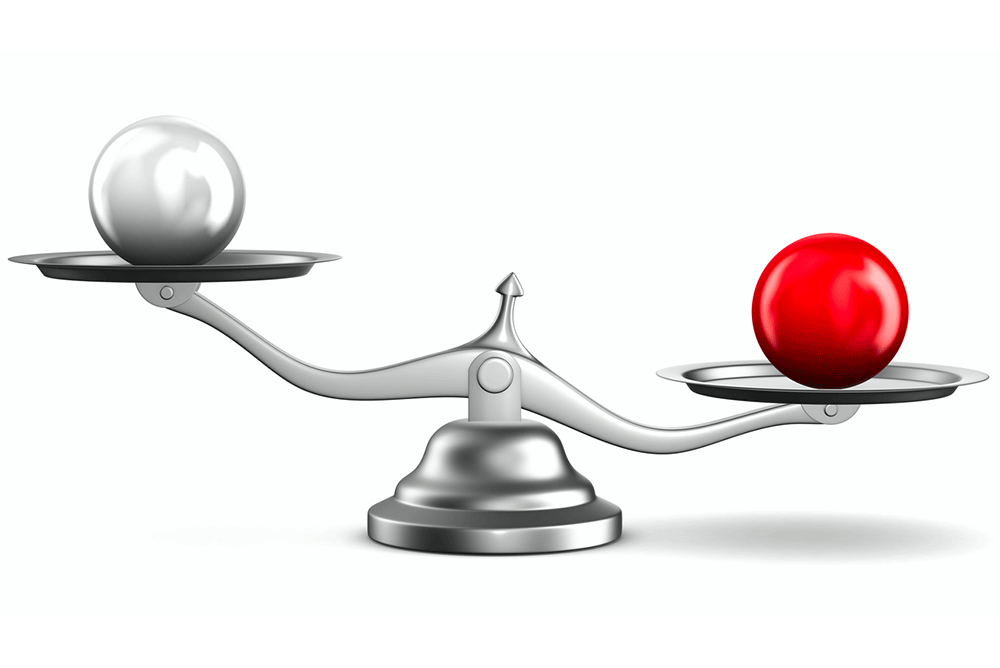
iStock
WHEN SOMEONE remarked that I seemed to be dragging my left foot, I had no idea—not why it started or how long it had been that way or even that I was doing it.
Everyone’s body is unbalanced—not wobbling when you stand on one foot, but having one side stronger or more stressed or more painful than the other. Starting before birth, the fetus curls in one direction. Next come years with the right side heavier—because of the liver, around three pounds for a woman—than the left, which has only the heart, at little more than half a pound, helped by the stomach but only when full.
Daily activities that unequally stress the dominant side include eating, writing, carrying a purse, playing almost any sport. To drive a car, your right side always gets in first, and your right foot usually does most of the work. One side gets into bed first.
Using a computer mouse with your right hand if it’s the dominant one, “your right pectoral (chest) muscle will become shorter,” writes Todd Kuslikis on A Shot of Adrenaline. “At the same time, the muscles on the right side of your back will elongate and rotate the portion of the spine they are linked to. This causes some interior spinal muscles to become atrophied, potentially causing pain by pinching nerves.”
Imbalance is exacerbated by injury. And after the injury heals, favoring one side has become so automatic that the body keeps performing off-kilter. Internal surgery, such as an appendectomy or a C-section, leaves scar tissue that pulls in one direction or the other.
To assess imbalance, look in the mirror—especially at the hips and shoulders. If one shoulder is higher or lower than the other, you’ll be strengthening and/or pinching one side, writes Greg Presto on Shape.com.
For those with chronic pain in joints and muscles, “repetitive movement is the culprit…crowds out the full range of spontaneous movement upon which the body depends for total function,” writes Pete Egoscue in “Pain Free for Women.”
“Disengaged muscles and a misaligned skeleton can take the edge off any fitness and exercise routine…why most people don’t stick with them,” according to Egoscue. “Over time, neglected muscles and structures get harder to move.”
Before starting strength training, the musculoskeletal system (MS) should be operating correctly for at least a month, he contends. And correcting imbalance can alleviate chronic pain and make weight loss easier. Chronic MS pain, Egoscue writes “is symptomatic not of advancing and accumulating years but of advancing and accumulating dysfunctions.”
The “Egoscue Method,” available locally at personal fitness specialists Dave Reynolds and Associates in Silver Spring, claims to “help thousands of individuals tap into their body’s ability to heal itself and free themselves of chronic pain.” An Egoscue therapist begins by assessing your basic structural alignment, in addition to conducting a lengthy interview about injuries, weaknesses and general health. An individualized program of “E-cises” (E for Egoscue) is created to correct imbalances and built on as you progress.
General advice for rebalancing your body: start workouts with the weaker side, and let that side’s performance determine what the other side does in terms of weights and repetitions—and/or do extra work on the weak side. While walking, biking, swimming, I make my left leg and foot work harder, when I remember.
The best exercises are isometric: holding a static position against a fixed resistance, often a wall—for at least 30 seconds. To stabilize and rebalance shoulders, stand with forearms pressing against a wall. For the legs, lie on your back with your legs bent and feet pushing against the wall.
Good exercises for the upper body include planks, push-ups and squeezing a large ball between two hands; for the lower body, squats with your back against a wall, lunges and a hip lift or bridge.
For isometric exercises, don’t hold your breath—for two reasons. Literally, because these exercises can cause blood pressure to rise. And figuratively, because benefits in improved balance and tone from isometric exercises occur very slowly over time.
—Mary Carpenter
Read more well-being posts here.

In doing PT for compromised cervical discs, my physical therapist has worked hard on muscles on the OPPOSITE side of where the pain and tightness is – according to her, everything is interconnected and my body has been compensating to try to protect the injured area. Very enlightening for me.